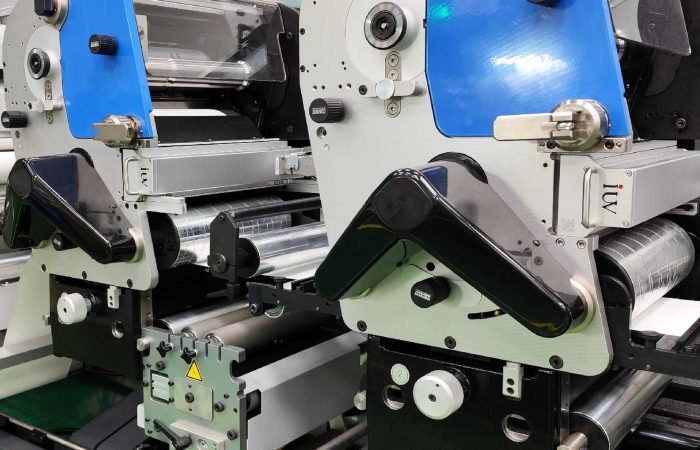The year 2025 is poised to be a landmark for LED flexographic printing. This technology is no longer just an emerging trend; it’s rapidly becoming the industry standard for narrow web printing. The move towards LED UV curing systems offers a compelling blend of performance, efficiency, and environmental benefits that are hard to ignore. Brands are demanding higher quality, faster turnaround times, and more sustainable packaging solutions. LED flexo printing is perfectly positioned to deliver on all these fronts.
One of the most significant drivers is the cost-effectiveness of LED UV curing. While the initial investment in LED lamps might seem higher, the operational savings quickly outweigh it. These lamps consume significantly less energy compared to traditional mercury vapor lamps. This translates directly into lower electricity bills, a crucial consideration for any printing operation looking to optimize its bottom line. Furthermore, LED lamps have an exceptionally long lifespan. They don’t require frequent replacement, minimizing downtime and associated maintenance costs. This reliability ensures consistent production schedules and predictable expenses.
Beyond cost savings, the environmental impact of LED flexo printing is a major draw. The reduced energy consumption means a smaller carbon footprint. This aligns perfectly with the growing global emphasis on sustainability and corporate social responsibility. Brands are increasingly scrutinizing their supply chains for eco-friendly practices, and adopting LED flexo printing demonstrates a commitment to a greener future. The absence of mercury in LED lamps also eliminates hazardous waste disposal issues associated with older UV curing technologies, simplifying compliance and reducing environmental risks.
The technological advancements in LED flexo printing are also accelerating. We’re seeing enhanced spectral control and improved power output from LED arrays. This allows for more precise and efficient curing of a wider range of inks and coatings. Specialized LED wavelengths can be precisely targeted to initiate polymerization, leading to faster cure speeds and improved ink adhesion. This is particularly important for demanding applications like high-gloss finishes, metallic effects, and specialized varnishes. The ability to achieve a full cure at higher press speeds means printers can increase their throughput without compromising on quality.
The development of new ink formulations specifically designed for LED UV curing is another key innovation. These inks offer excellent adhesion, vibrant color reproduction, and superior scratch and chemical resistance. Formulators are constantly working on optimizing ink rheology and pigment dispersion for optimal performance under LED illumination. This collaborative effort between ink manufacturers and press builders is crucial for unlocking the full potential of LED flexo printing. As the technology matures, we can expect even more advanced ink solutions, including those with enhanced haptic properties or functional characteristics.
In the realm of label printing, LED flexo is already a dominant force. Its ability to handle intricate designs, fine details, and a variety of substrates makes it ideal for the diverse demands of the label market. From pharmaceutical labels requiring rigorous standards to eye-catching cosmetic labels, LED flexo delivers. The fast curing times also enable efficient production of short-run jobs, a growing segment of the market driven by personalization and market testing. This flexibility is a significant competitive advantage for label converters.
While flexographic printing is the primary beneficiary, advancements in LED UV curing are also impacting other printing methods. For instance, in offset printing, particularly for narrow web applications, LED UV curing is gaining traction. It allows for instant drying of inks on a wider array of substrates, opening up new possibilities for material choices and finishing techniques. The reduced heat generation from LED lamps is also beneficial for heat-sensitive substrates, which can be a limitation with traditional UV curing. This broader applicability signals a potential shift across various print segments.
The integration of digital technologies with LED flexo printing is also an area to watch. Print shops are increasingly adopting hybrid workflows that combine the strengths of flexo and digital printing. LED flexo can be used for high-volume, cost-effective production of common elements, while digital printing handles variable data or short runs of specialized designs. This synergy allows for maximum efficiency and flexibility in meeting complex customer demands. The seamless integration of these technologies is crucial for staying competitive in the evolving print landscape.
Looking ahead to 2025, the precision and control offered by LED curing systems will continue to be refined. We can anticipate advancements in lamp design that offer even more uniform energy distribution across the print width, eliminating potential curing inconsistencies. Smart curing systems that can dynamically adjust their output based on ink density and press speed will become more prevalent. This level of automation ensures optimal curing for every job, reducing waste and improving overall print quality.
The interaction between LED UV light and specific ink chemistries will be a focal point for research and development. Understanding these interactions at a molecular level allows for the creation of inks that cure faster, with less energy, and with enhanced performance characteristics. This deep dive into material science is what will drive the next wave of innovation in LED flexo printing.
The adoption of LED flexo printing is not just about adopting new hardware; it’s about embracing a more efficient, sustainable, and versatile printing process. As we move further into the mid-2020s, the benefits are becoming increasingly undeniable. Printers who invest in this technology will be well-positioned to meet the evolving demands of their customers and thrive in a competitive market. The future of narrow web printing is undeniably bright, illuminated by the power of LED technology.












